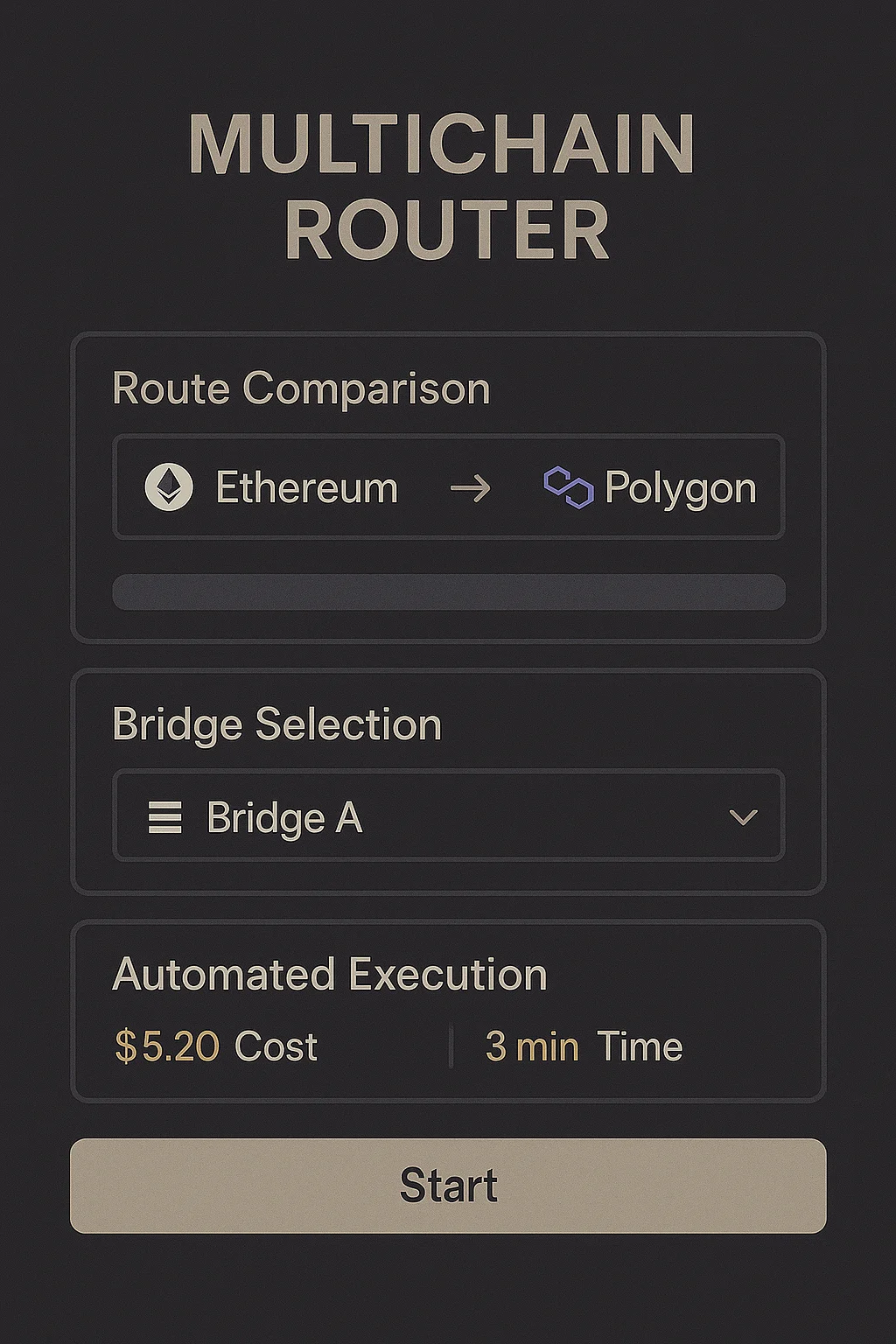Multichain Router
Multichain Router: Cross-Chain Navigation
Multichain routers find optimal paths for moving assets between different blockchain networks. They’re like GPS for cross-chain transactions, finding the cheapest and fastest routes.
A multichain router is a protocol that automatically finds the best path for transferring assets between different blockchain networks. It compares routes across multiple bridges and chains to optimize for cost, speed, or security based on user preferences.
How Multichain Routers Work
Route optimization analyzes available bridges, liquidity levels, fees, and transfer times across different paths to recommend the best option for specific transfers.
Liquidity aggregation combines multiple bridges and cross-chain protocols to provide better rates and availability than any single bridge could offer.
Automated execution handles the complex multi-step process of cross-chain transfers, including approvals, bridge interactions, and destination chain operations.

Real-World Examples
- Li.Fi aggregates dozens of bridges and chains to find optimal cross-chain routes
- Socket provides routing infrastructure for wallets and dApps to integrate cross-chain functionality
- Bungee offers user-friendly interfaces for comparing and executing cross-chain transfers
Why Beginners Should Care
Simplified complexity of cross-chain transfers through automated routing eliminates the need to understand dozens of different bridge protocols.
Cost savings from route optimization can significantly reduce fees compared to using random bridges without comparison shopping.
Risk diversification across multiple bridges and protocols reduces dependence on any single cross-chain infrastructure provider.
Related Terms: Cross-Chain Bridge, Bridge Aggregator, Interoperability, Multi-Chain
